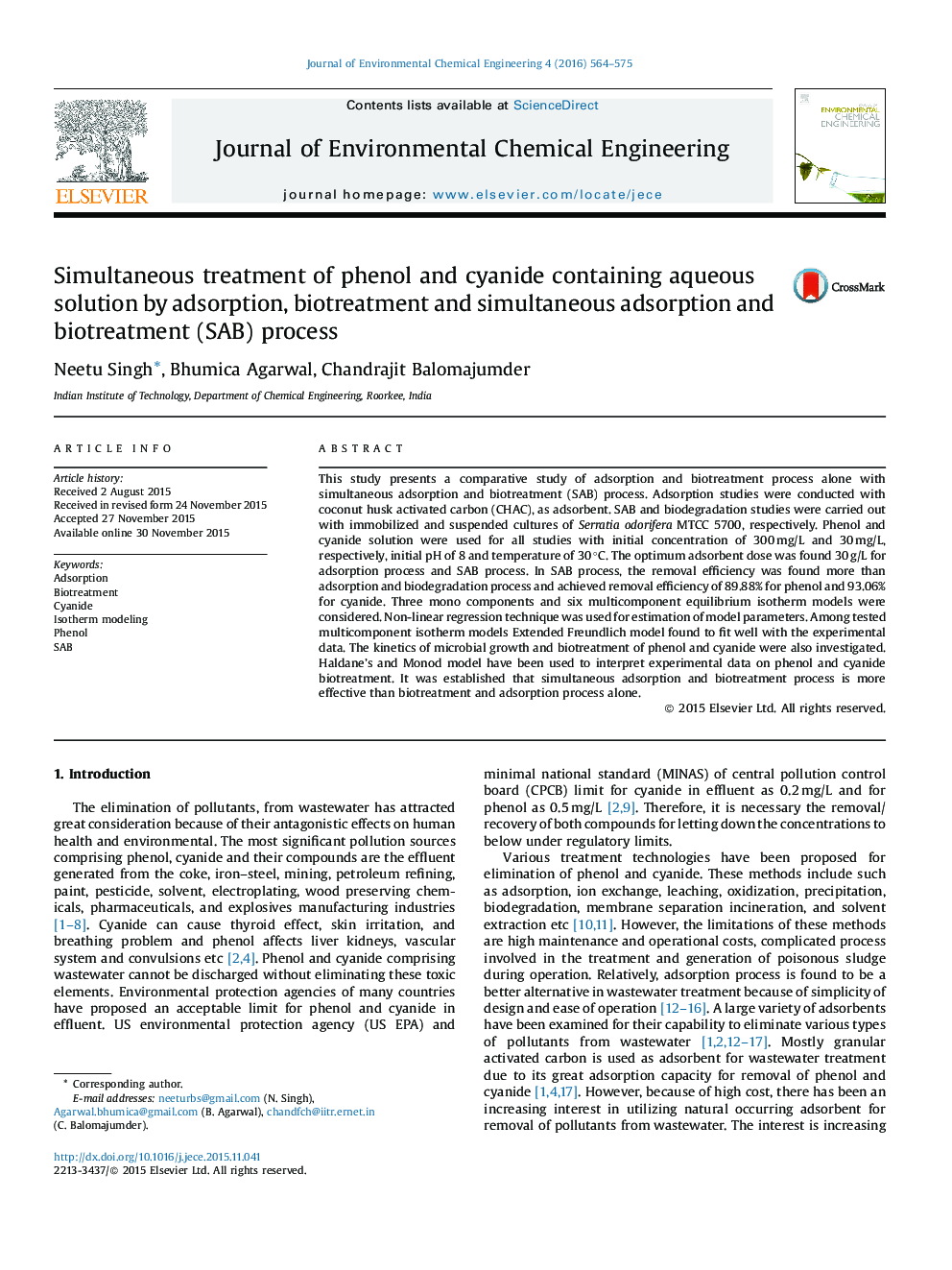| Article ID | Journal | Published Year | Pages | File Type |
|---|---|---|---|---|
| 221911 | Journal of Environmental Chemical Engineering | 2016 | 12 Pages |
This study presents a comparative study of adsorption and biotreatment process alone with simultaneous adsorption and biotreatment (SAB) process. Adsorption studies were conducted with coconut husk activated carbon (CHAC), as adsorbent. SAB and biodegradation studies were carried out with immobilized and suspended cultures of Serratia odorifera MTCC 5700, respectively. Phenol and cyanide solution were used for all studies with initial concentration of 300 mg/L and 30 mg/L, respectively, initial pH of 8 and temperature of 30 °C. The optimum adsorbent dose was found 30 g/L for adsorption process and SAB process. In SAB process, the removal efficiency was found more than adsorption and biodegradation process and achieved removal efficiency of 89.88% for phenol and 93.06% for cyanide. Three mono components and six multicomponent equilibrium isotherm models were considered. Non-linear regression technique was used for estimation of model parameters. Among tested multicomponent isotherm models Extended Freundlich model found to fit well with the experimental data. The kinetics of microbial growth and biotreatment of phenol and cyanide were also investigated. Haldane’s and Monod model have been used to interpret experimental data on phenol and cyanide biotreatment. It was established that simultaneous adsorption and biotreatment process is more effective than biotreatment and adsorption process alone.
